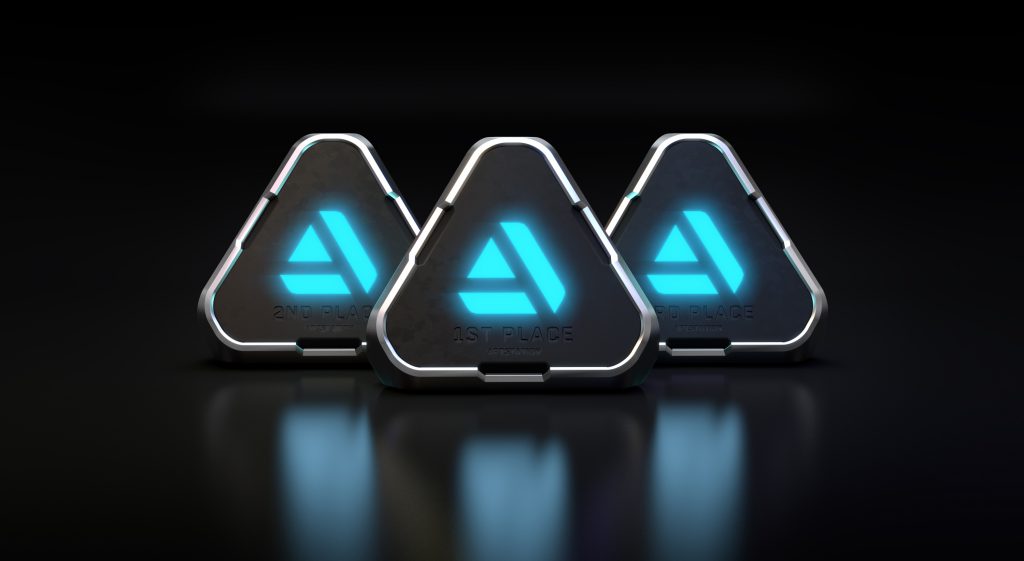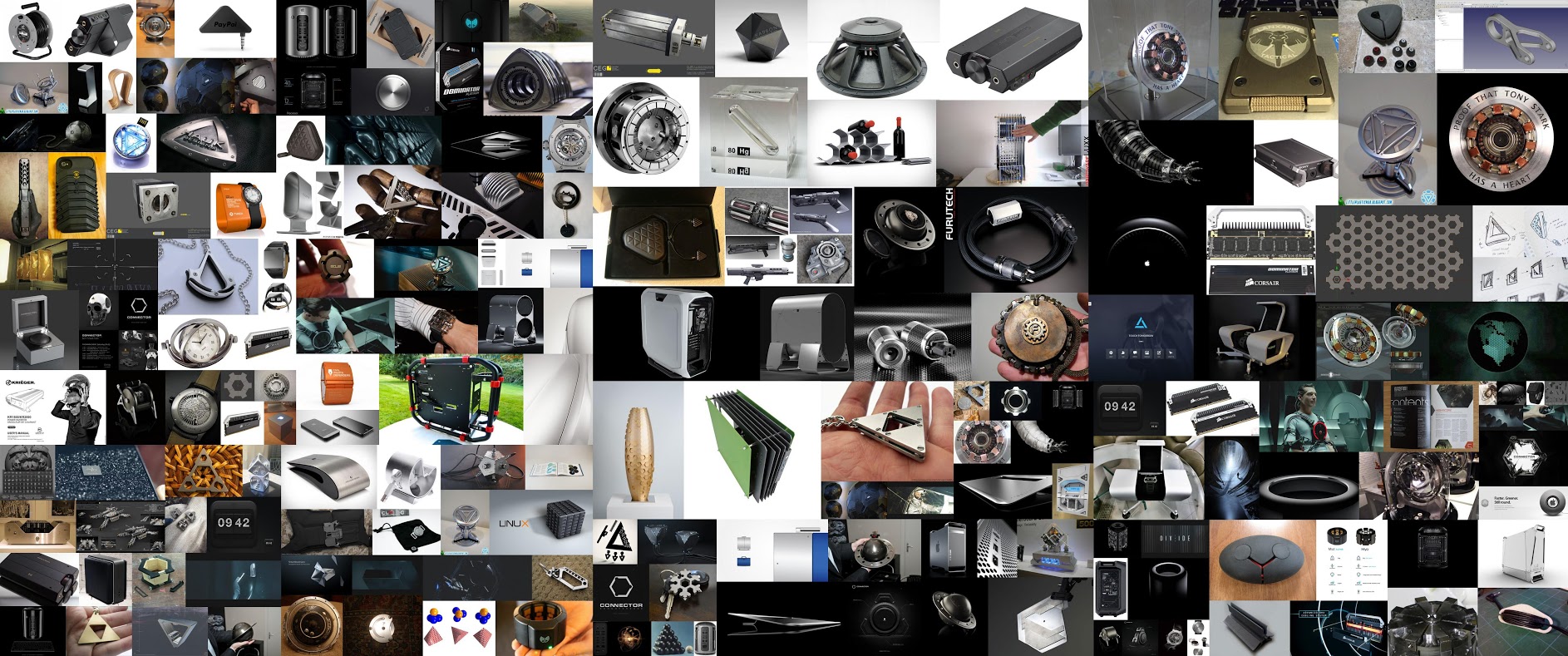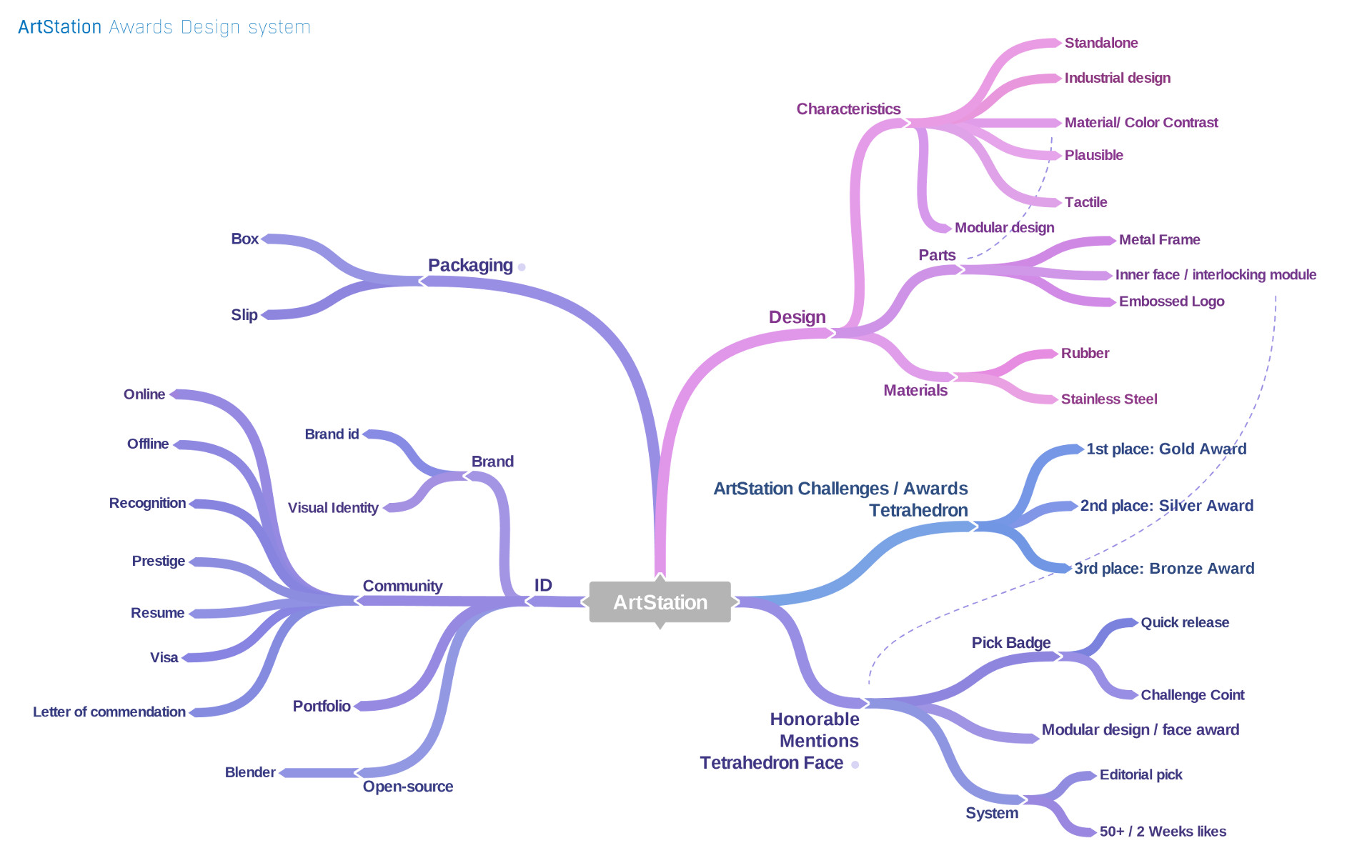How we designed the ArtStation Challenge awards

Intended to foster community learning and celebrate the work of the industry’s rising stars, ArtStation’s Challenges aren’t like other CG contests. Here’s how they differ – and why we turned to noted industrial designer Ivan Šanti? to create the iconic designs for the awards
If you’ve been following ArtStation’s new community challenges, you may have noticed that they aren’t ordinary CG challenges. The first challenge attracted over 3,300 entries, with some artists putting in hundreds of hours into the challenge. And rather than gaining a simple badge to add to user profiles, each of the winners will receive a complete virtual trophy, designed with meticulous attention to detail by industrial designer Ivan Šanti?.
And so with the closing of the first challenge, The Journey, we felt it was a good time to look at how the awards came about, why they’re much more than just a simple ‘Editor’s Choice’ – and most of all, how Ivan came up with his amazing designs.
More than just a badge for your user profile
“For a long time, people have been asking us for some kind of award for the Picks section of the site,” says ArtStation founder Leonard Teo. “Lots of artists really wanted some kind of badge they could use in their profile to say that their work had been featured there.”
But while many other CG websites do offer such badges, Leonard felt that is wasn’t appropriate for ArtStation.
“We realized that we couldn’t make Picks an award, because it just wouldn’t be fair,” he says. “ArtStation is a social network, so the more followers you have, the more people are likely to like your art, the higher you will trend on the site, and the more likely you are to be picked. We made a conscious decision to not make Picks an award.”
“An award has to have meaning. There has to be a proper call for entries, a proper judging panel and process. To win an award, you have to have earned it in a fair competition.”
Leonard Teo, Founder, ArtStation

The full ArtStation Awards system. 1st, 2nd and 3rd places receive the tetrahedron and Honourable Mentions winners the flat coin.
A stepping stone to a job at a major studio
In March, ArtStation launched its Challenges. Intended to foster community-based learning, the submission process is entirely open: anyone can see anyone else’s work. Users can even livestream their works in progress on Twitch and ask for feedback.
“We wanted to make the community challenges as transparent as possible,” says Leonard. “We wanted a spirit of openness and learning. We intentionally did not offer the usual prizes like hardware and software. As soon as you do that, people’s attitude change: they don’t want to share their work in progress, and they don’t want to comment on anyone else’s, because they’re in competition. The rivalry gets out of control and the atmosphere isn’t friendly anymore. In our recent survey, we found that overwhelmingly artists agreed with us on this — the usual prizes of hardware and software were not the motivation for joining the challenge — learning, improving and being seen by the community were.”
“Every single recruiter we’ve talked to has said that when you win in an international competition, you’re much more likely to be hired and an award goes a long way in securing a work visa. An award has far more value than a piece of hardware or software prize that you probably already have, can buy, or don’t need.”
Leonard Teo, Founder, ArtStation
An entertainment design award with industrial design values
To reflect the value of winning a community challenge to an artist’s career, ArtStation wanted to create something more than a simple 2D graphic. “I wanted something that really looked like an award,” says Leonard. “I didn’t just want a little badge saying ‘Gold Award’. That’s why I brought Ivan in to design it.”
Straddling the boundary between industrial and entertainment design, Ivan Šanti?’s portfolio ranges from work for Croatian supercar manufacturer Rimac to organising the Connector 3D conference and running ZBrush Workshops.
“Whatever I design, I try to make a visual statement,” he says. “I do entertainment design in a more industrial design kind of way, and vice versa. Otherwise, everyone gets stuck in their own market sector, and there isn’t much room for innovation, because people only look at their colleagues’ work.”
A long-time user of ArtStation before being asked to work on the Challenges, Ivan was also well aware of the value of community recognition for an artist’s career. “Getting featured in the top row of the Pixologic website was a sudden change for me,” he says. “It felt crazy how much exposure I got.”
Researching the market
With a relatively open brief to work from – Leonard says that he wanted Ivan to surprise him, so he simply stipulated that the award should reflect the ArtStation brand, and work on a variety of backgrounds, both on and offline – Ivan began by analyzing the design of existing awards.
“I saw two trends,” he says. “People were either doing minimalist design – cubes, or something engraved on glass – or sculptures. Nothing in between. I wanted to do something different.”
Instead, Ivan put together a reference sheet consisting largely of consumer products: speakers, watches, and even the Mac Pro workstation. “Half of them come from my own archive,” he says. “When I’m not designing, I collect images like this. It’s not that I’m necessarily going to use them in my own work: I’m just addicted to seeing good design.”
Within two weeks, he had his basic concept: a truncated pyramid reflecting the form of the site’s logo. “ArtStation’s design DNA includes the triangle,” he says. “The purest representation of that form in three-dimensional space would be a tetrahedron.”
The design was an instant hit. “The pyramid was so iconic,” says Leonard. “As soon as I saw it, I knew that it was right.”
Building a design language
With the concept nailed down, Ivan began the painstaking process of refining his design, developing a detailed set of specifications for the work. “Even though I had so much freedom with the brief, as soon as I could, I set down my own set of rules and standards that I had to obey,” he says.
Those rules – which you can see in the detailed design document that Ivan created for the project – included a set of visual touchstones for the work. Versatility, modularity and interlocking parts were in. Extravagance, ornamentation and unnecessary detail were out.
“I’m not a bit fan of kit-bashing,” says Ivan. “I use screws in almost every design I do, but it’s just to get the conversation started in a mental sense. I want every part to have a purpose.”
While Ivan has used a range of commercial 3D software in his work, the award designs were created entirely in Blender, and rendered using the software’s Cycles renderer. “Blender isn’t for everyone, but it’s very versatile,” he says. “It’s better [than commercial tools] in some areas. And the fact that it’s open-source seemed appropriate to the spirit of the ArtStation awards. This really is about community.”
The finished images show four separate awards: first, second and third place, plus a flattened coin-like design for honorable mentions. Although not shown in the standard graphics, Ivan has also designed a case for each award – Leonard Teo likes it to a clam shell with a pearl in the middle – and even specified real-world materials: stainless steel, anodized aluminum, silver, gold and platinum. Although the awards aren’t physical objects – at least, not yet – they would be physically fabricatable.
“Ivan really took the design a long way,” says Leonard. “He went above and beyond what I was expecting!”

1st, 2nd and 3rd place Award

Honourable Mention Award
A next-gen award for a next-gen challenge
In total, 3,388 people entered The Journey challenge, with 944 submitting a final image. The judges – Brain Storm School‘s James Paick and Ironklad Studios‘ Justin Fields – have had a tough time deciding on the winners, who will be announced on Monday. The next community challenge is due to launch in July, with ArtStation aiming to run two or three a year in future.
“I tried to define an exquisite industrial design experience, I wanted the ArtStation award to be what a next-gen award design should represent: an extension of visual identity and brand integrity.”
Ivan Santic, Designer, ArtStation Award
It seems an appropriate reward for what is intended as a next-generation CG challenge: one intended to foster community learning, and to celebrate the work of the industry’s rising stars. ArtStation believes that it is a serious award, for serious artists.
See the entries for ArtStation’s current Challenges
Visit Ivan Šanti?’s ArtStation gallery
Read Ivan Šanti?’s design document for the ArtStation awards
Download the ArtStation Award graphics























